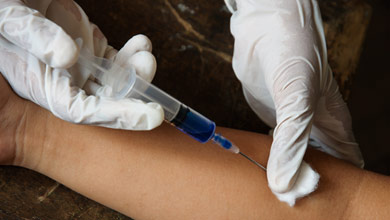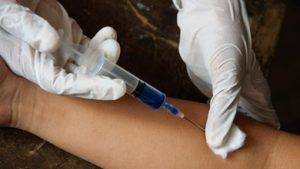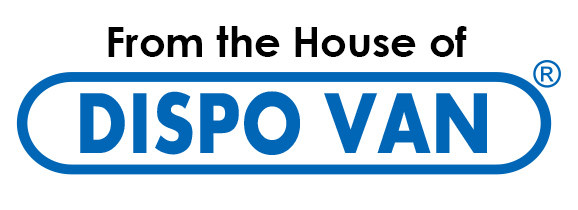

About drug delivery
Drug delivery is a crucial aspect of clinical intervention for patient care and cure. The route and rate of drug delivery are decisive in ensuring effective treatment. The success of a new drug is more dependent on the delivery system and dose form which support therapeutic compliance and value. Drug delivery refers to the process of administration of any therapeutic material into the bodies of humans or animals for treating any ailment or injury.
The major factors to be considered in drug delivery process are:
- The efficacy of the drug
- Safety of the patient
Different routes of drug delivery are in practice and this is a fast evolving area, as novel therapeutic agents are added day by day and patient safety levels also rise to new heights. The options for drug delivery routes have three basic criteria like the desired outcome of the therapy, type of the disease treated and the nature of the therapeutic product.
The basic routes of drug delivery are categorized into four broad types:
- Oral
- parenteral
- Transdermal
- inhalation.
Oral Drug Delivery: oral drug delivery is the oldest route of drug administration and still enjoys popularity, because of its easy nature and high level of public acceptance.
Parenteral Drug Delivery: The parenteral route comprises heterogeneous ways of drug administration for delivering the active therapeutic components into the body of the patient via other than the oral route. They include subcutaneous, intradermal, intravenous, and intraarterial routes. This mode of delivery is preferred for achieving comparatively faster results with minimal drug dosage. Currently, many drugs are synthesized to suit this mode of delivery.
Transdermal Drug Delivery: The transdermal route of drug delivery relies on the topical application of the formulation on the skin or the mucous membrane and often employed for effective local delivery of the drug selectively to the part of the body affected. In this route of drug administration, the drug gets delivered to the systemic circulation without entering the gastrointestinal tract or the metabolism.
Inhalation Route of Drug Delivery: The inhalation route is specific for the treatment of respiratory diseases or disorders and is the prioritized mode of treatment for such ailments, since this ensures the direct release of the therapeutic components to the lungs and avoids systemic effects.
Current trends in drug delivery
Recent research in drug development has evolved sophisticated and highly potent drugs comprising biological molecules (biologics), such as proteins, DNA, RNA and lipids for the treatment of challenging diseases like cancer, certain genetic disorders, etc. Stability and toxicity are the formidable challenges associated with these drugs.


Nanoparticles of different sizes and forms are extensively used in the targeted or site-specific release of chemotherapeutic agents, owing to their biocompatible and /or biomimetic features and also their physical and chemical characteristics.
Major types of nanomaterial-based drug delivery systems comprise the liposomes, synthetic copolymers of drugs or RNA molecules and functionally labeled nanoparticles. However, these delivery systems find practical relevance only in the treatments involving biological therapeutic agents.
The concept of patient- friendly drug delivery needs to cater patient-centric innovations across the entire range of drug formulations. Targeted drug delivery often through Monoclonal antibody (Mab) tagging, controlled-release technologies, equipped with pulsatile release systems enabling release of the active ingredients in pulses at defined time intervals, mini tablets, orally disintegrating tablets, wearable auto- injectors, depot injectable delivery, dry powder inhalers (DPIs) and pressurized metered dose inhalers(pmDIs) are some of the important delivery systems evolved for conventional drugs during the recent years.
Mab tagging of the therapeutic ingredients is used more often in cancer therapy with toxic chemotherapeutic or biologic agents. Controlled release technology has wide applications in the treatment of chronic disabilities/diseases (eg. Cancer, diabetes, etc. as well as infectious diseases (Malaria, Typhoid, etc.).
Depot injectable formulations represent a wonderful delivery platform facilitating targeted and sustainable delivery of injectable formulations of drugs thereby serving dual patient-friendly causes like safety and efficiency. Wearable auto- injectors cater the needs of patients who need long-term medication and are under self-care, for ailments such as cancer, blood disorders, autoimmune diseases, and genetic disorders.
The advanced versions of wearable injector systems can reduce or even eliminate injection pain, abolish needles from sight and makes the process simpler for the users, thereby enhancing compliance and overall satisfaction of the patients. Attempts are on for linking these devices with smartphone apps for improving the comfort of the patients as well as compliance with the medication.
The DPIs and pmDIs have revolutionized the treatment of asthma and other respiratory disorders and chronic conditions, more prevalent among the children and the elderly. The pmDIs enable convenient and reliable multi-dose presentation of the drugs to the patients. The device is handy and user-friendly, and hence can be used independently by kids and the elderly.
About patient-friendly drug delivery
The U.S. Institute of Medicine defined patient-centered care as: “providing care that is respectful of and responsive to individual patient preferences, needs, and values and ensuring that patient values guide all clinical decisions.”
Accordingly, patient-friendly drug delivery has been considered as one of the fundamental factors for improving the quality of the health care system by the majority of the experts in the field. Painless, fast and targeted delivery of the therapeutic active components, selectively to the parts of the human body affected makes lots of sense in modern clinical practice as this meets the purpose of patient-friendly treatment approach and also minimizes the dosage requirement of the drug as well as the side effect of the drug. Therefore, the concept needs to empathize with the patient at every stage of drug development.
Drug delivery receives more practical significance in cases of chronic diseases demanding prolonged treatment such as asthma, autoimmune disorders, diabetes, etc. The diseases demanding intensive medication with multiple types of drugs like that in cancer and cardiovascular disorders such as heart attack or stroke, etc. and medication to the mass, as in the case of vaccination are other two contexts where the delivery system takes a critical role.
Why patient-friendly drug delivery?
1. Changing societal scenario demands increased levels of self -reliance by patients.
The family structure, professional demands, influence of globalization, all exert an impact on the society and lifestyle of the people around the world. The level of self-reliance is high in the current society and is true with conditions of illness also.
2. Changing lifestyle demands faster treatment options and speedy recovery.
In the current scenario, both the patients and the healthcare providers have limitations of time and hence prolonged treatment schedule or hospitalization is not preferred by either side. Hence, short clinical intervention schedule and fast mode of recovery would be encouraged.
3. Novel drugs like biologics often need specialized and specific delivery systems for ensuring safe, fast and effective action of the drugs.
Most of these drugs are employed in the treatment of cancer, autoimmune disorders or hereditary diseases. The molecular therapeutic agents like DNA, RNA, proteins, etc. need protection against degradation before the execution of their function inside the human body. Meanwhile, the body of the patient also needs protection against their side effects. Therefore, highly specific targeted delivery systems with ample protective strategies for the drug molecules as well as the patient is crucial for achieving successful outcomes from such therapies.
Considering the above social and technical factors which call for the patient-centric approach for drug delivery, adoption of this concept becomes a basic need for improving the quality of life among the patient population and the health care system. In addition, this would act as one of the decisive factors for the professional and commercial success of the healthcare industry in the future.

